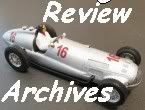.
Didier Auriol 1986
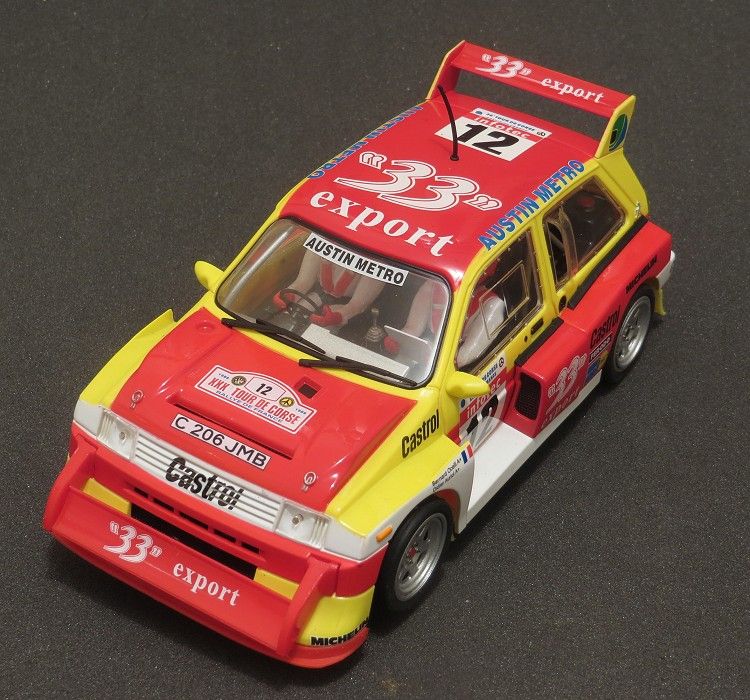
By Phil Wicks
The Metro was, on the face of it, an unassuming mini car aimed at the first time new car buyer market. But it did have a big pair of boots to fill. It was part of the BMC/Leyland mini family and was in fact a grandchild of the Mini. British Leyland was struggling against market down turn and rampant unionism when eventually it was bailed out by the UK government. They employed a ‘trouble shooter’ who restructured the company and set out a path for reconstruction and eventual resale, and the Metro was going to be part of that plan. Released in 1980, it did prove popular in the UK where sales were heartening.
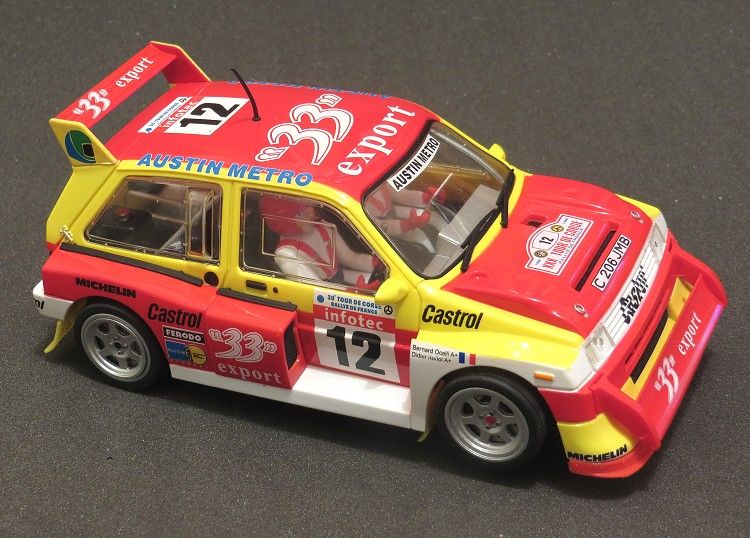
As we all know, part of the success of a modern motor car can rely on one or several factors. The name is all important, give a car a wrong name and no matter how good it is it will founder. Pedigree is important too. Give a car a good pedigree (as the Metro had) and that too will express itself in sales numbers. Thirdly, if you could give the car some charisma or kudos, with these combination of attributes you should have an endearing product in spades. Kudos and charisma can be won on the battlefield of motorsports of all kinds; here, the name Golf springs to mind as an example of a car which achieved all these attributes! So, the British Leyland company made a conscious decision somewhere along the way to boost their average sales with help of the Rally set.

BL eventually released the MG version of the Metro in 1275 c.c. form. This also came with a worked head with improved gasflow and bigger valves; tuned camshaft and a larger carburettor. By now Metro sales were eclipsing those of the Ford escort but this wasn’t to be for long. The 6R4 (Six cylinder, Rally, four wheel drive) was a massive departure from its namesake, even the body was a mere mock up from the and probably the only parts shared with the where the name badges? The car was created for the Group B rally class and Williams GP Engineering where engaged to design the car, starting with the 3 litre V6 DOHC 4vpc engine based on the Cosworth DFV engine!
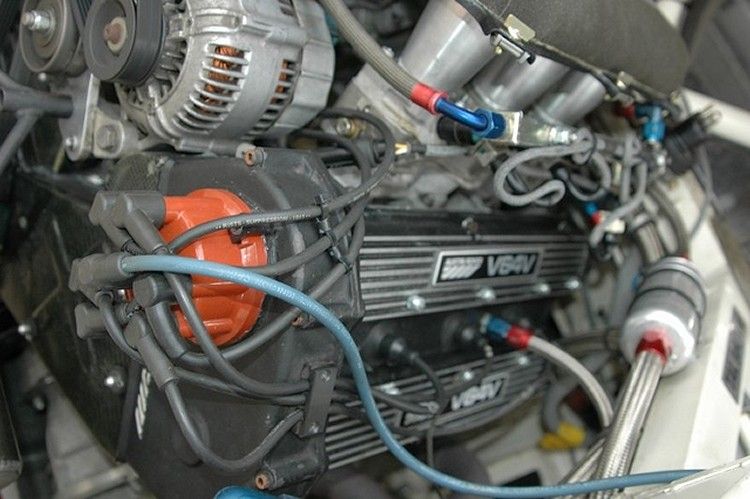
200 models were made for homologation and these were sold with the 186kW engine for road going performance; the business model, for track use only, was to have a naturally aspirated engine which produced 306 kW (410 bhp.) 1985 saw the release of the new ‘Metro’ and BL announced it would comply with homologation regs by that November. Initially there was some minor success but big things were hoped for in 1986, but sadly it didn’t happen. Engine issues dogged the cars outings and the car failed to finish any events of the World Rally Championship in the 1986 calendar. Its only successes were in national events such as the Rally de France.
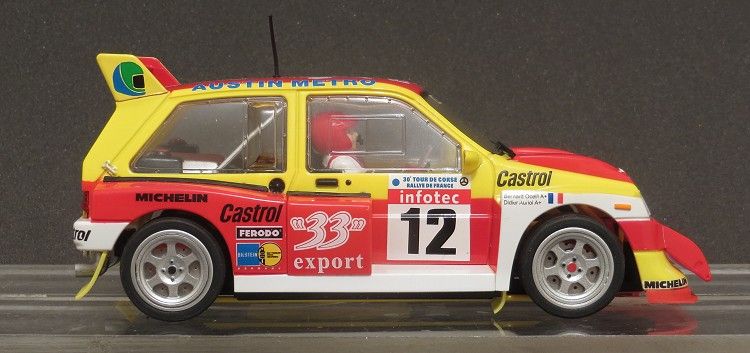
Half way through the 1986 WRC calendar, and after horrific accidents and spectator deaths in Portugal and France, Gp B was dropped and the Metros and others limped to the end of the racing calendar. Austin Rover withdrew from the rally scene at the end of the season and dispersed its rallying assets. Tom Walkinshaw bought the rights to the engine in 1989 and it is interesting to note that the engine later reappeared in the Jaguar 220’s, only this time with twin turbos, a larger swept volume and boasting a power output of 400kW.
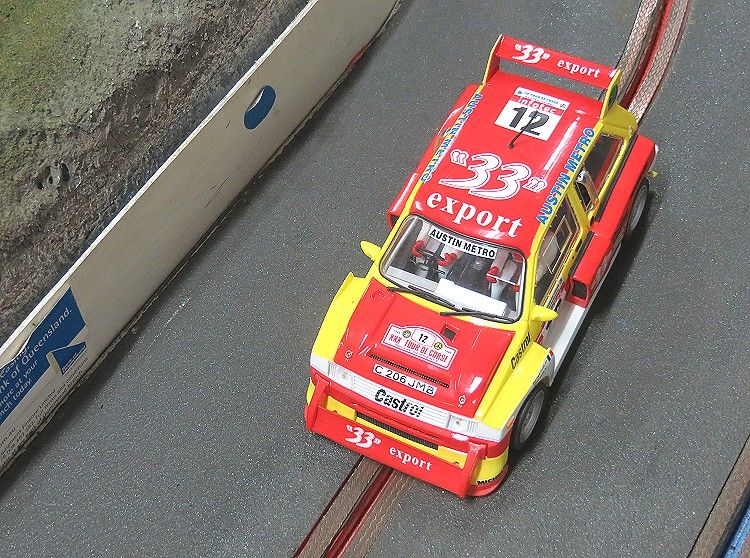
Before I go any further I must say that MSC have made a great looking model, even in its various liveries. A bit quirky and a bit unbelievable that this family mini car was turned into such a monster. But then I suppose we could say the same about the Renault 5 ?! So how much justice have they done it?

This is a model of the 1986 Metro 6R4 as driven by Didier Auriol and Bernard Ocelli in the French stage of the 1986 WRC. MSC have used the KISS principle here and whereas the mouldings are vary basic, the decor has won the day. The outside of this variant is very busy and the main sponsor “33†export, who are a French Lager manufacturer, covers most of the main panels. Tampo is very crisp and the tiniest of detail has been added where maybe others may have not bothered. Occupants names are almost imperceptible on the rear of the wings but a magnifying glass will reveal them in great accuracy.

Door handles , filler caps, lynch pins and hatch straps are all there in detail and MSC have supplied four very pliant mudflaps for effect. Another nice feature is the sideglass detail. The acrylic vented windows are faithfully reproduced and they have even gone to the length of fitting the sealer strips along the tops of the mudguards as separate items!! There is a little bit of photo etched grille work but this is less apparent from the outside as it is matt black and barely visible through the vents themselves. Light mouldings are average and fulfil their duty, the lower edge of the front air dam is also a pliant material like polyurethane or similar, for the most part glued on, and the exterior is finished off with some convincing wiper arms and a coms antenna.
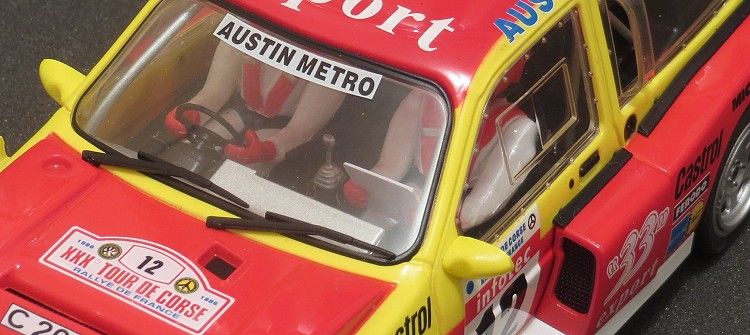
Inside the model MSC have made a decent job of the half driver’s tray. The engine detail is vary basic and unnoticeable in the back of the model. Didier and Bernard too are very plain and are begging someone to take them out and add a bit more colour and detail, but there is one confusing aspect. This model is depicted as a right hand drive car....but it has a left hand dashboard ?? I can only suspect that MSC’s other models are in actual fact LHD, and the dash is a one size fits all! Lastly inside, I have to say that the navigator’s notes entertained me!
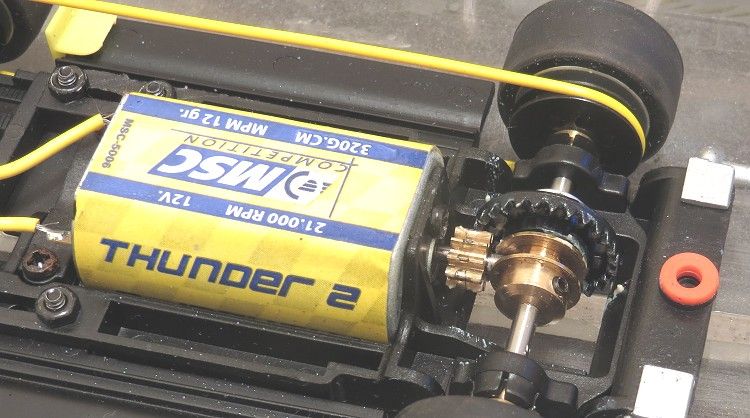
Once the body is off, the simplicity is self evident. The body is very thin! Very, VERY thin! So if you are looking to race this in a full on magnet situation I should be prepared to leave the race arena and shed a tear outside before racing is over! Indeed the body weighs in at 20 grams in its entirety, not much more than a Scaley classic F1 body! Part of this saving is achieved by the driver’s tray which is in fact a vacuum formed lexan type tray! The rest of the saving is achieved by some very accurate and ultra thin injection moulding.
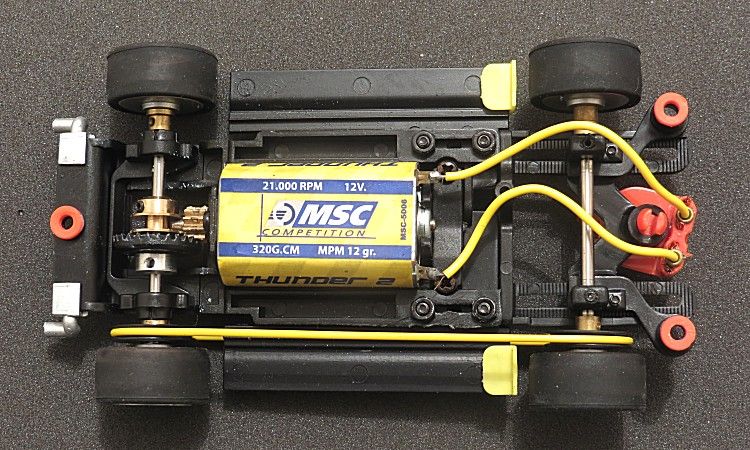
The chassis has an adjustable front end and once again I can only assume it is a ‘one size fits all’ with other MSC models? No amazing revelations here as far as things go with the motor being well clipped in and the axles located firmly too. There are several points where the budding slot rallyist can alter measurements and settings. The first one would be the adjustment screws for the front axle. If you race on plastic track, especially Ninco and old SCX and Scalextric, then the ride height may well want tinkering with otherwise you might see the front wheels dangling akimbo while doing your circuits. It should be less evident on Carrera and Scaley Sport as the conductor rails are a lot lower.
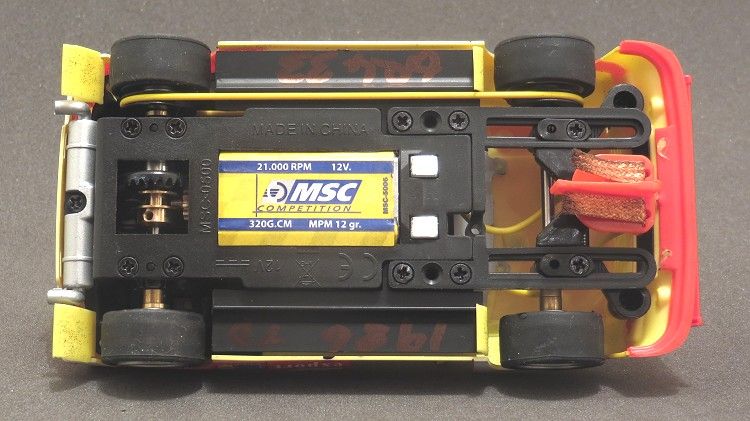
The drive band is purely for decoration I’m afraid. If you rotate the front axle, there is no where near enough tension to drive the rear end too, which indicates to me that similarly, the amount of drive to the front axle is minimal!! It too is made from a polymer product and once it has been on the model for a few weeks it will stretch to the point where it has no tension. If you want effective front wheel drive I suggest you take the band off and pop down to your local seals shop and get a rubber ‘O’ ring a couple of millimetres shorter than the band. This should restore the stretch and tight fit, and restore effective front wheel drive.
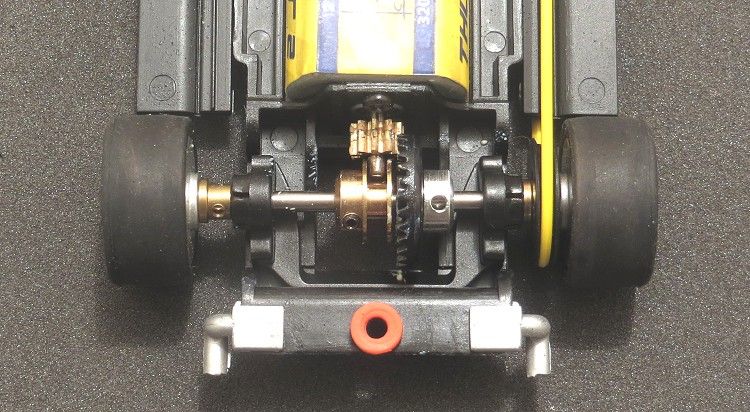
The drive train is and I must say I like it. The contrate is separate to the centring hub! This means once you have centred the axle with the brass hub, you can then alter the gear mesh by adjusting the alloy gear hub Mmmmmmm! Nice! The axle itself runs through the chassis in a couple of brass bushes inserted into the rear of the chassis. These look like they may well be self centring, but I can’t see enough of them to confirm that.
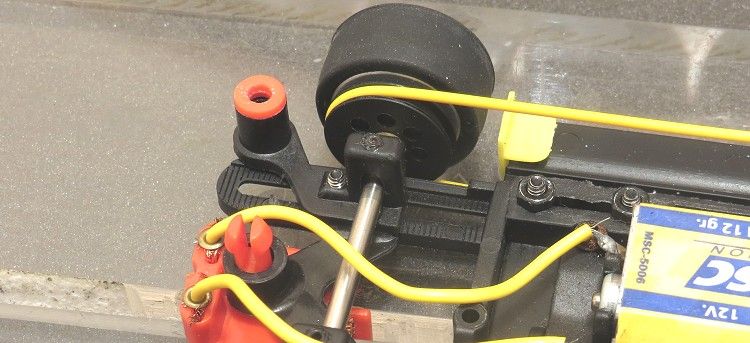
The chassis is mounted by three screws, two up front and one at the rear. I have come to prefer this set up as you can free off the chassis, and the front mounts still ensure the body sits squarely on the chassis in its looseness. The mounting holes have some polymer washers glued on them, again this might be part of the ‘osfa’ design ethos.
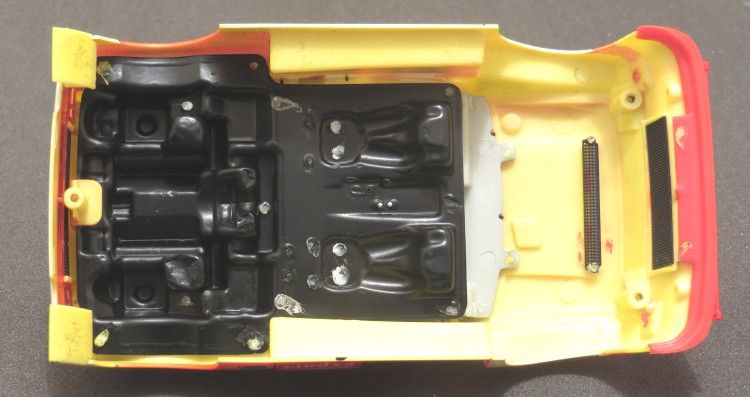
There are several chassis adjusting screws about the model and my advice is not to touch them; these are preset at the factory and I can’t see any reason that they might need adjusting. Playing with them will see the tenuous plastic threads ripped out of the chassis and then it will be another case of tears before bedtime! I like to stick the body screws onto the magnet when a model is taken apart, that way I don't loose them! But,I noticed that the body mounting screws are not magnetic so be careful where you put them when servicing the model. If you are as disorganised as me, they could easily get lost.
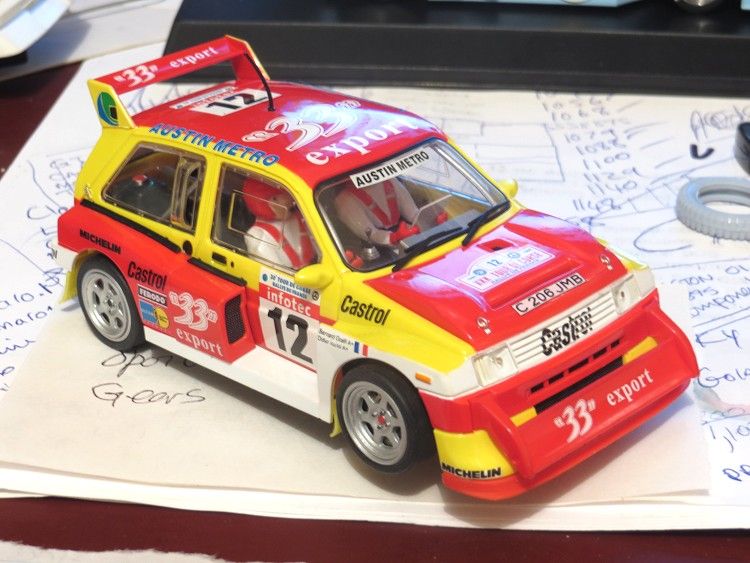
The motor has plenty of grunt, far too much in my opinion for home racing unless you have a large track, All this power is controlled by a forward mounted magnet screwed in place which is strong, but in the wrong place. As a non magnet racer it becomes even hairier. You will need a good hand controller to maintain control over this model and the normal fare given out in racing sets is not going to cut it with this model. The reason for this grunt is the high motor torque combine with a ten tooth motor pinion! The motor itself has both bearing ends exposed which allows for adequate oiling of the armature shaft, unlike a lot of early boxer motors where front bearing was sealed.
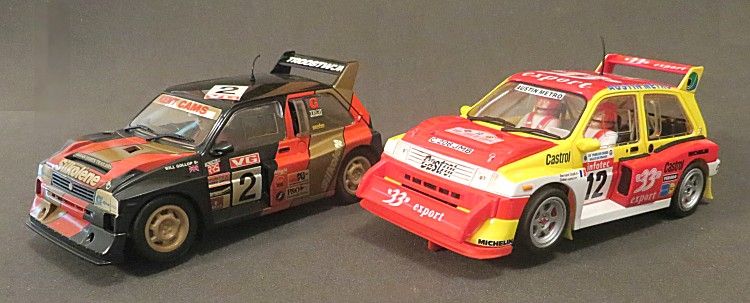
Scaley v. MSC
The guide is unusual in that the blade part is waisted! By that I mean the guide is thinner in the centre than at the ends. For those who have read my Carrera reviews you will remember this is something I did to the guide blade to prevent it binding in the tighter corners, No doubt this has been done for the same reasons? The guide has plenty of depth too, and is also spring loaded, much like the Ninco sport guides, but the spring really isn’t that strong and I would wonder if it contributed to front end stability that much Mmmm.....
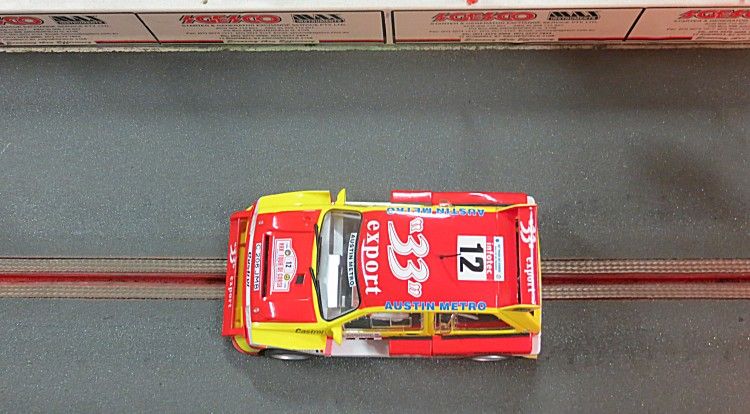
Finally the wheels and tyres. The wheels are very good, they look up to the job and not only are they round....they’re concentric too! The tyres are a medium rubber compound and feel to have a deal of grip but the tyres will need a light truing before any serious track work. But don’t overdo it, there’s not much meat on them and you’ll be through the tyre before you know it! So what’s it like on the track? Mmmm Well. First up was my local, the Logan City Rraceway track. This is Ferrador and Magnabraid and has a little less downforce than Carrera. The model is very touchy and getting a good balance on the professor motor controller was hard, but we achieved it and once rolling, it was easier and easier to drive. But it is a pocket rocket and any lapse in concentration will see it off the track and into the landscaping. Once again, and I know I’m an old sook, I would like to see a series of these Group B’s racing with NC1 class motors. It would make for great, and close, racing on a technical track.
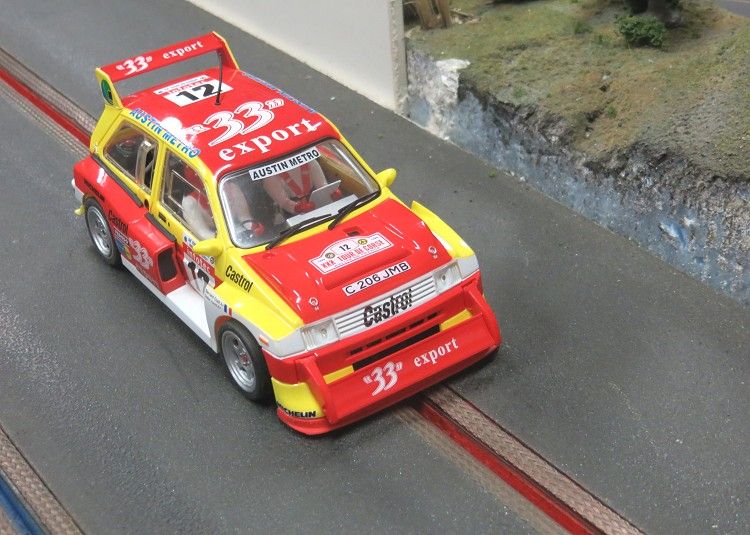
Next up was a run on a medium sized Scaley Sport home circuit with a 35 ohm Parma 'Economy' controller. Ideally I should have gone down to a 25 or less as the model is slow in responding to early trigger movement, then sets off at a blistering pace after half throttle! The model then corners like a real rally car with the rear end hanging out over the conductor rails. The magnet is not in the best place to control this and it is hard to master the ‘one minute you are on, the next minute you are off’ behaviour. In this situation the model should be driven using a variable power supply to allow the driver to ‘trim’ the power to their talents. As mentioned a couple of times before the model is a pocket rocket, and if you are a SCM then this has plenty going for it. Braking is fairly sudden too as per the usual boxer motors and that causes you to stop early before corners on home racing circuits if you don’t have some kind of brake control.
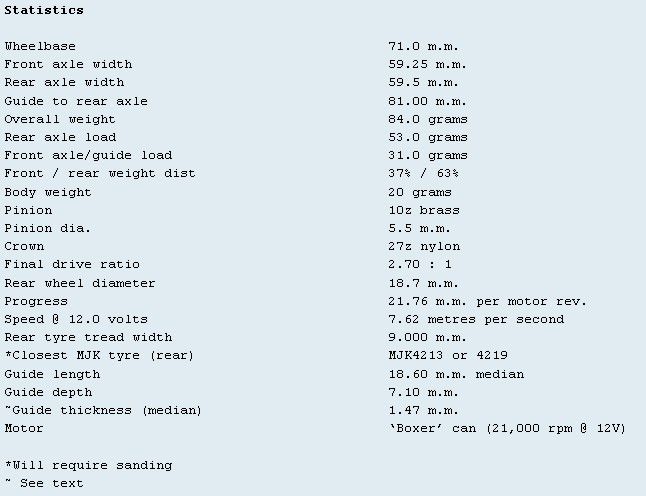
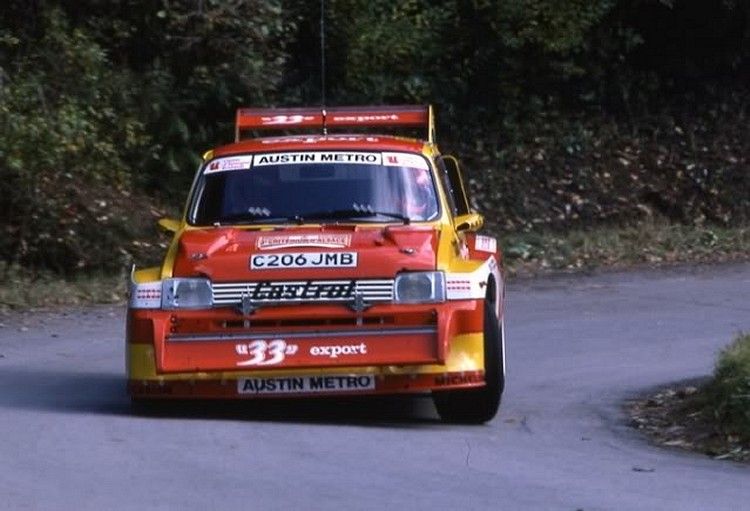
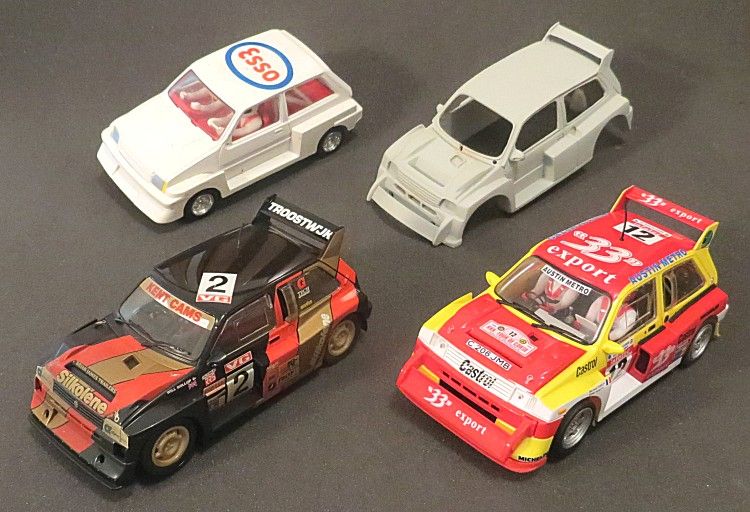
Top left: The first Metro Slotcar - Scalextric ............. Top right - The resin body from a Teamslot kit
Bottom left - The Scaley Metro from the Rallycross Ltd Ed.
In spite its fearsome track presence, I still like this model very much and my view is that it should be tamed to the same level as the other models in the group B range from various makers, and a standard motor class would see some very close racing on the best technical tracks. Go ahead.......try it!!
Group B rally
Many thanks to fellow slotracer Tim Dillon for the opportunity to review this model

















